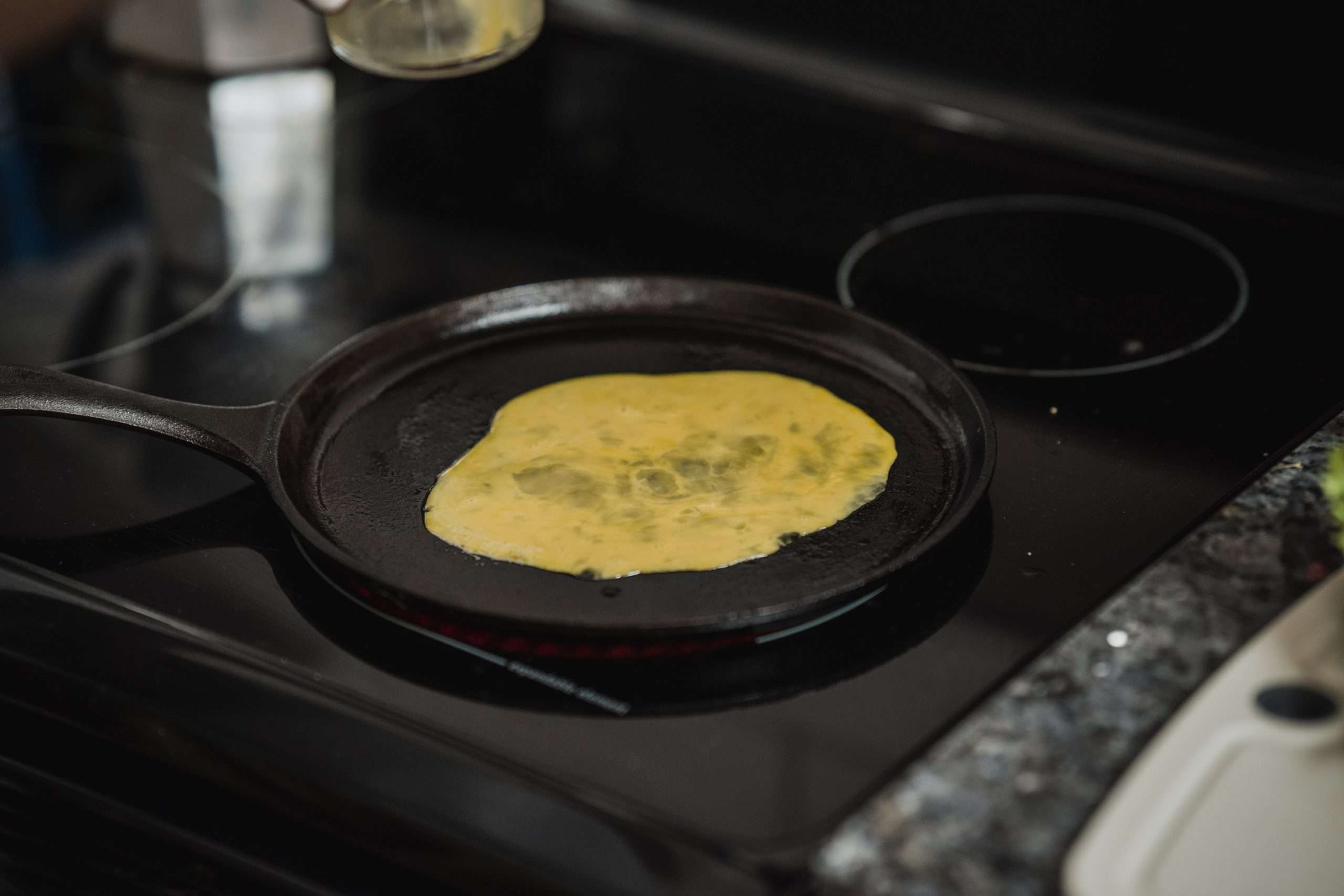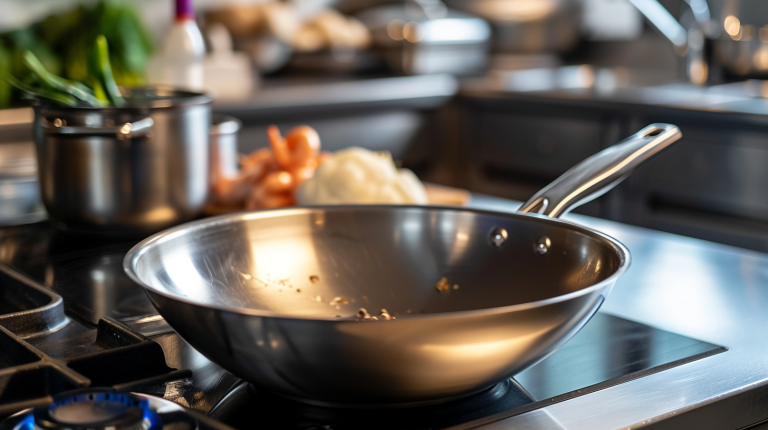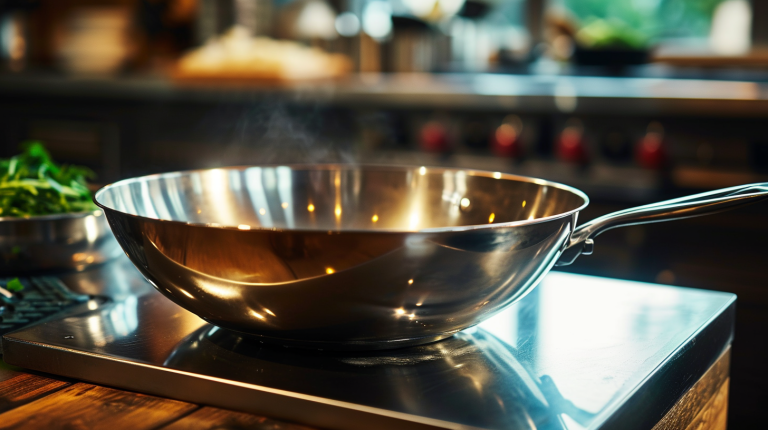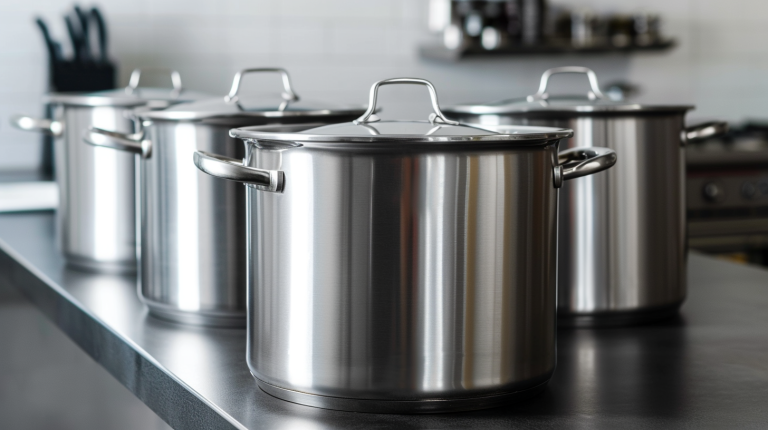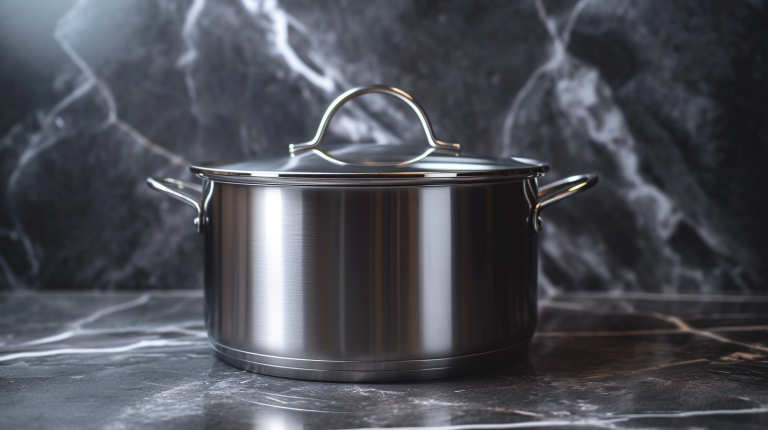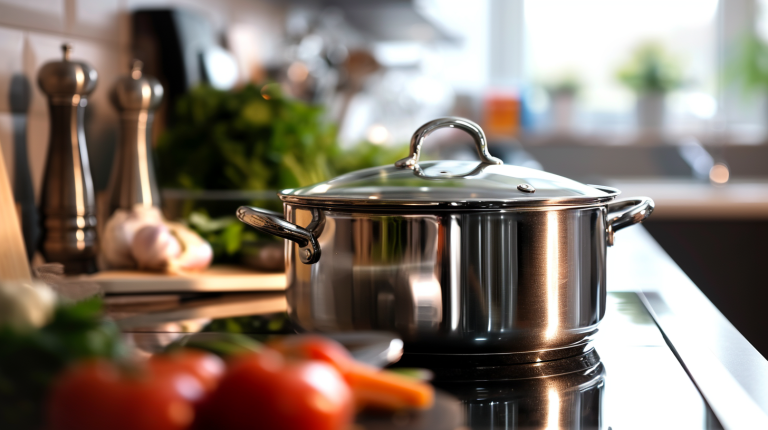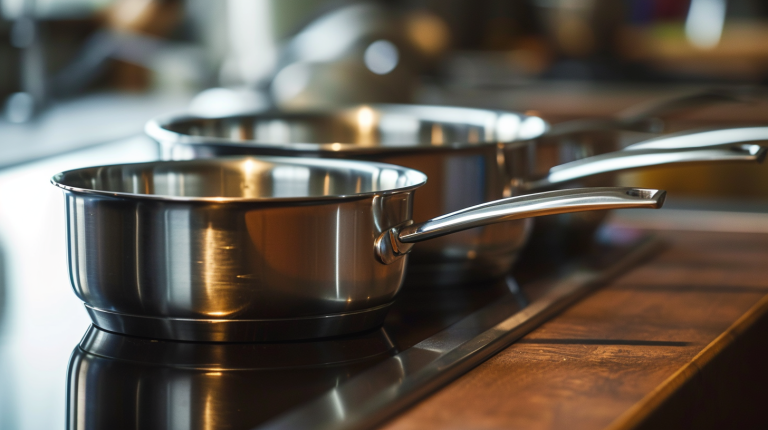[ez-toc]
Introduction
Induction cookers have entered thousands of households and become an indispensable tool for many professional chefs and home kitchens. However, only when the cookware and induction cooker match each other can we get a pleasant cooking experience. This article will tell you what types of cookware can be used on induction cooktops and introduce more knowledge about induction cookware.
Working principle of induction cooker
Induction cooking takes advantage of an electromagnetic field generated by passing an alternating electric current through a copper coil wire placed in an induction hob. The produced magnetic field vacillates and induces an eddy electrical current moving in the cookware.
Instead of using an electric or gas-heated element, induction cooktops heat pots and pans directly. It boils water up to 50 percent faster than gas or electric, and maintains a consistent and precise temperature. The surface stays relatively cool so spills, splatters and occasional boil-overs don’t burn onto the cooktop, making clean-up quick and easy.
What kinds of cookware can be used on induction cooktop
Cookware made of the following types of materials cannot be used on induction cooktops. Please check the raw materials carefully when purchasing.
1.Non-magnetic stainless steel
2.Pot with stands
3.Heat resistant glass
4.Ceramic
5.Copper
6.Aluminum
What kinds of cookware can not be used on induction cooktop
1.Magnetic Stainless Steel
2.Cast Iron
3.Enameled Iron
4.Nickel
When purchasing, please pay attention to the label on the cookware. The label will clearly indicate its induction compatibility.
How stainless steel cookware works on induction
If stainless steel cookware is to be used on an induction cooktop, it must have a bottom that is compatible with induction.This bottom usually consists of an aluminum or copper core and is wrapped in stainless steel. Because they are better conductors than stainless steel.
An oscillating magnetic field is created when the copper coil and electric current join forces in the cooking area. The electric coupling with the magnetic field then permeates the cookware’s bottom to generate heat, which is then used to cook the food.
Another benefit of adding an electromagnetic induction-compatible bottom sheet to the bottom of the pot is that it only heats the bottom and keeps the pot body cool, effectively preventing burns.
How to test for induction compatibility
The simplest and most effective method is to use magnets for detection.With a regular magnet, if it sticks to the bottom of pots and pans, then the cookware is induction compatible. If it doesn’t stick to the bottom, it’s not electromagnetic compatible.
If you don’t have a magnet lying around, we have another simple and effective way to test it.
Place your cookware on the induction cooker (make sure the size of the cookware matches the induction area of the induction cooker), add an appropriate amount of water, turn on the induction cooker, wait for a while, if the water boils, it proves that the cookware is compatible with induction .
Both of the methods listed above can quickly test whether your cookware is induction-compatible. But both methods have a prerequisite, that is, the cookware must be flat-bottomed. Even though the wok is compatible with induction, it cannot be used on an induction cooker.
How much does stainless steel induction cookware cost
Induction cookware tends to range from $50 up to $300. The difference in price results in a difference in performance. In order to avoid wasting money, I suggest that before purchasing a complete set of cookware, you can purchase a single pot or frying pan of the same brand and series to test its performance.Generally speaking, more expensive products will have better performance and last longer. In the long run, they are cheaper.
Caring for your induction cookware
In order to maximize the service life of induction cookware, I recommend the following measures:
1.Avoid overheating.Excessive heat can discolor stainless steel. Start at a lower temperature and gradually increase the temperature.
2.Do not use metal kitchen utensils.Metal kitchen utensils will scratch off the non-stick coating and damage the surface of the cookware.As an alternative, use silicone or wooden kitchenware.
3.Avoid cooling too quickly.Do not put freshly heated pots and pans into cold water immediately. Because this will cause deformation. The correct way is to let it sit for a while before putting it in cold water.
4.The induction area of the induction cooker should match the size of the cookware.Matching the sizes will distribute heat evenly and transfer it faster.
5.Hand wash.Although many cookware brands claim that their products are dishwasher safe, hand washing is still essential.Please remember to use warm soapy water and a soft cloth or sponge when hand washing.
6.Avoid wear and tear.Do not use steel wool or other tools that can easily scratch the surface of the cookware to clean it.
7.Dry in time.After washing, wipe away any remaining water stains on the pots and pans in time. Accumulating too much water stains will affect the use of cookware and human health.
8.Store on request.If the cookware set you purchased comes with a manual, please follow the instructions in the manual and store it properly. If not, keep them in a cool, dry place.
Recommendation
If you want to find cost-effective induction-compatible cookware manufacturers, Changwen is your best choice. Changwen is located in Xinhui District, Jiangmen City, Guangdong Province, one of China’s stainless steel product production bases. It has more than 20 years of production experience and provides OEM/ODM services. You can visit https://www.kitchenwarecw.com/about-us/ to learn more.

